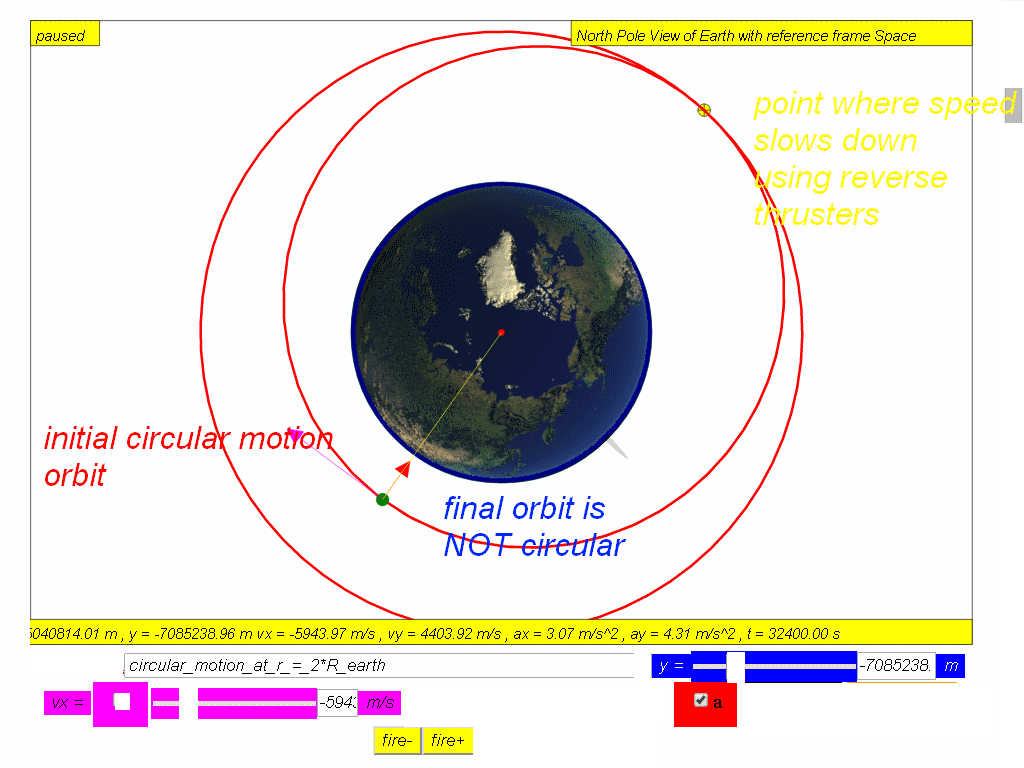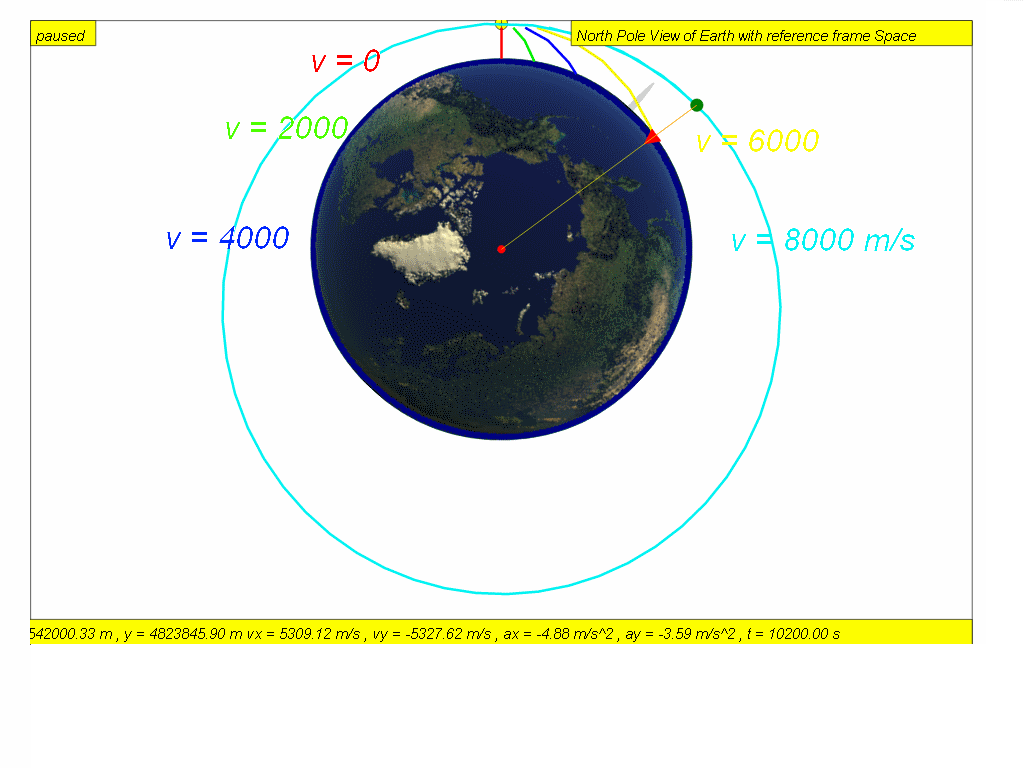
An object projected horizontally near the Earth’s surface follows
a parabolic trajectories as shown ( v = 0 red, v = 2000 green, v =
4000 blue, v = 6000 yellow and v = 8000 teal) .

As the speed of projection v increases, the object will reach a speed approximately v = 7888 m/s where the trajectory follows the curvature of the Earth’s surface.
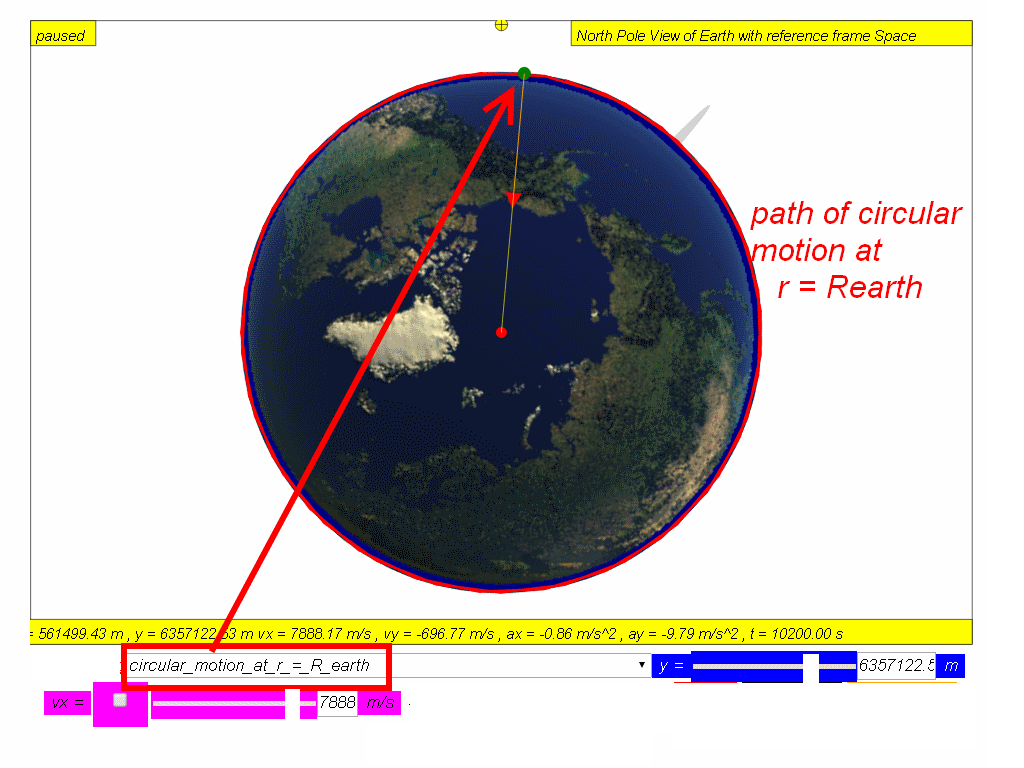
If air resistance is negligible, the object will orbit round the Earth continuously and will never meet the Earth’s surface such as speed v 8000 red m/s and v = 10000 m/s green.
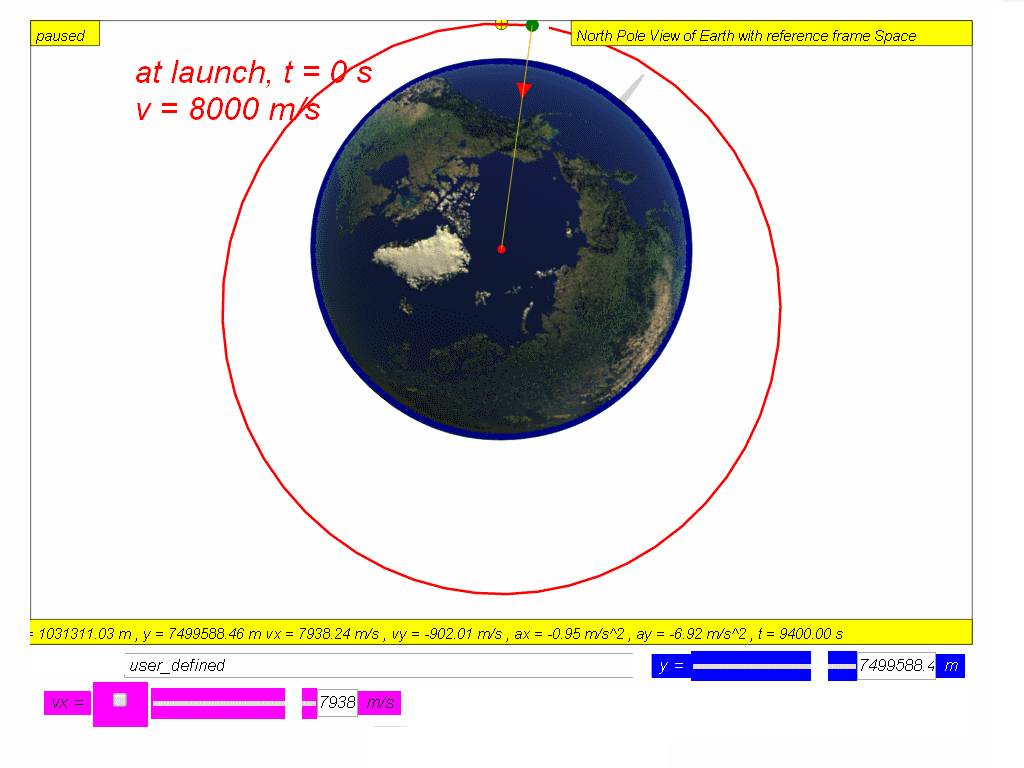

Many man-made satellites move in circular orbits around the Earth. The first man-made satellite, the “Sputnik 1”, was launched by Soviet Union in 1957. Since then, hundreds of satellites have been launched into orbit around the Earth. The only force acting on the satellite in a circular orbit (achieved by launching horizontally at vx =7276.69 m/s at height above Earth surface H = 0.185 RE where RE = 6370 000 m is the radius of Earth, is the Earth’s gravitational force. The gravitational force (red arrow is directed towards the centre of Earth) is also the the centre of the circular orbit.
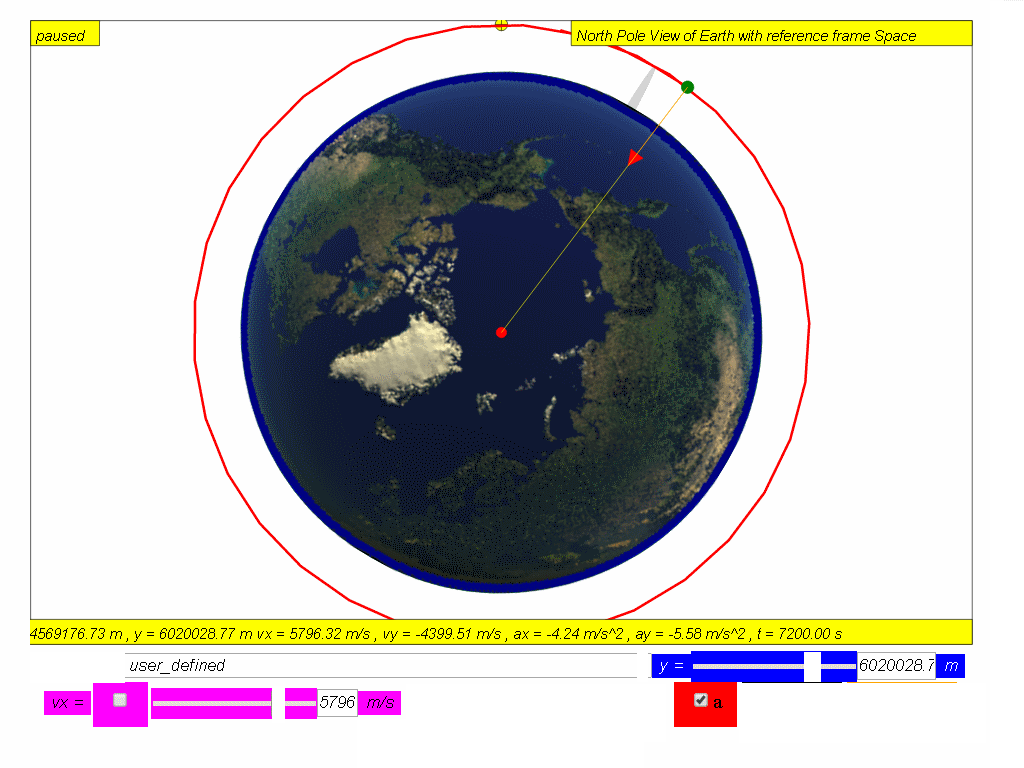
Since the satellite velocity (magenta arrow) is
perpendicular to the gravitational force (Red arrow), its
magnitude of velocity remains constant while its direction
changes.
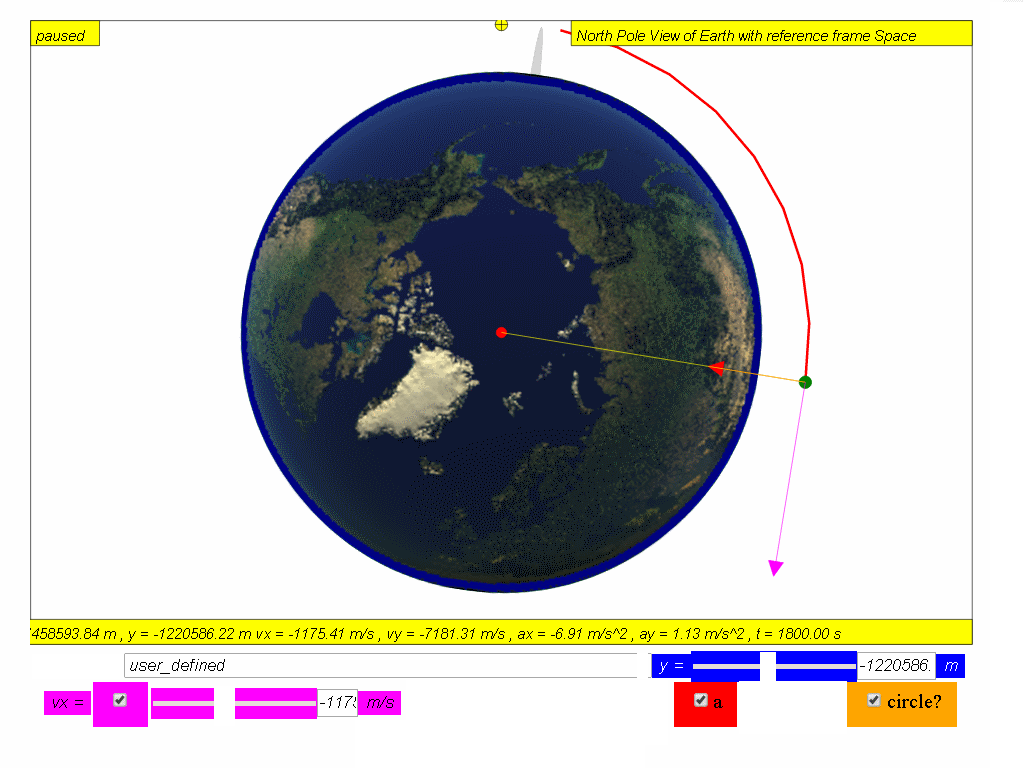
This means
that the satellite is traveling in a uniform circular motion
(recap Topic 6). At the same time, the distance from the
satellite to the centre of Earth will also remain constant in this
circular orbit.
For a satellite (or any object) in circular orbit, the
gravitational force acting on it is the centripetal force that
keeps it in circular motion.
Using newton's second law in this context of a circular motion orbit.
since in outer space, the assumption is only Earth's gravitational field is responsible for the circular motion and gravitational force is
thus,
the expression can be simplified to give the exact velocity required for circular motion This equation-formula can be used to calculate the speed required for any object to orbit around a planet of mass M at a constant distance-radius of orbit r.
where r is the radius of orbit from the centre of Planet M,